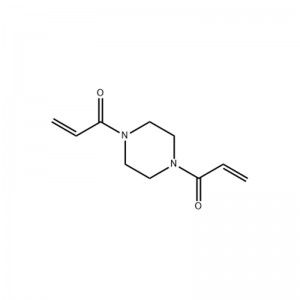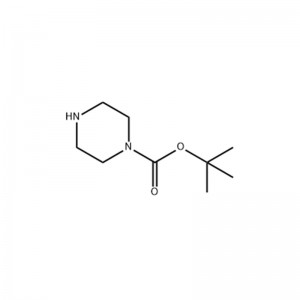
Products
1,4-Diacrylylpiperazine
Structural Formula

Physical
Appearance: White to off-white powder
Density: 1.114±0.06 g/cm3(Predicted)
Melting point: 91.5-93.5 °C(lit.)
Boiling point: 434.1±25.0 °C(Predicted)
Acidity coefficient: (pKa)-0.70±0.70(Predicted)
Safety Data
Customs Code:2933599090
Export Tax Refund Rate(%):11%
Application
Synthetic material intermediate
Fire-fighting measures
Fire extinguishing agents.
Extinguish the fire with water spray, dry powder, foam or carbon dioxide extinguishing agents.
Avoid using direct running water to extinguish the fire; direct running water may cause splashing of combustible liquids and spread the fire.
Special Hazards.
No information available.
Firefighting precautions and protective measures.
Firefighters must wear air-carrying breathing apparatus and full body firefighting suits and extinguish the fire upwind.
Move the container from the fire to an open area if possible.
If a container in the fire scene has changed color or made a sound from the safety relief device, it must be evacuated immediately.
Isolate the accident scene and prohibit the entry of unrelated personnel. Take in and dispose of fire water to prevent pollution of the environment.
Leak emergency treatment
Worker protective measures, protective equipment and emergency disposal procedures.
It is recommended that emergency response personnel wear air-carrying respirators, anti-static clothing, and rubber oil-resistant gloves.
Contact with or across the spill is prohibited.
Ground all equipment used during operation.
Disconnect the source of the spill if possible.
Eliminate all sources of ignition.
Delineate a cautionary area based on the area affected by liquid flow, vapor or dust dispersion, and evacuate extraneous personnel to a safe area from the side and upwind direction.
Environmental protection measures.
Contain spills to avoid contaminating the environment. Prevent spills from entering sewers, surface water and groundwater.
Reception and removal methods of spilled chemicals and disposal materials used.
Small spills: Collect spilled liquid in a sealable container if possible. Absorb with sand, activated carbon or other inert materials and move to a safe place. Flushing into sewers is prohibited.
Large spills: Construct an embankment or dig a pit to contain it. Seal drainage pipes. Cover with foam to inhibit evaporation. Transfer to tanker or special collector with explosion-proof pump, recycle or transport to waste disposal site.








